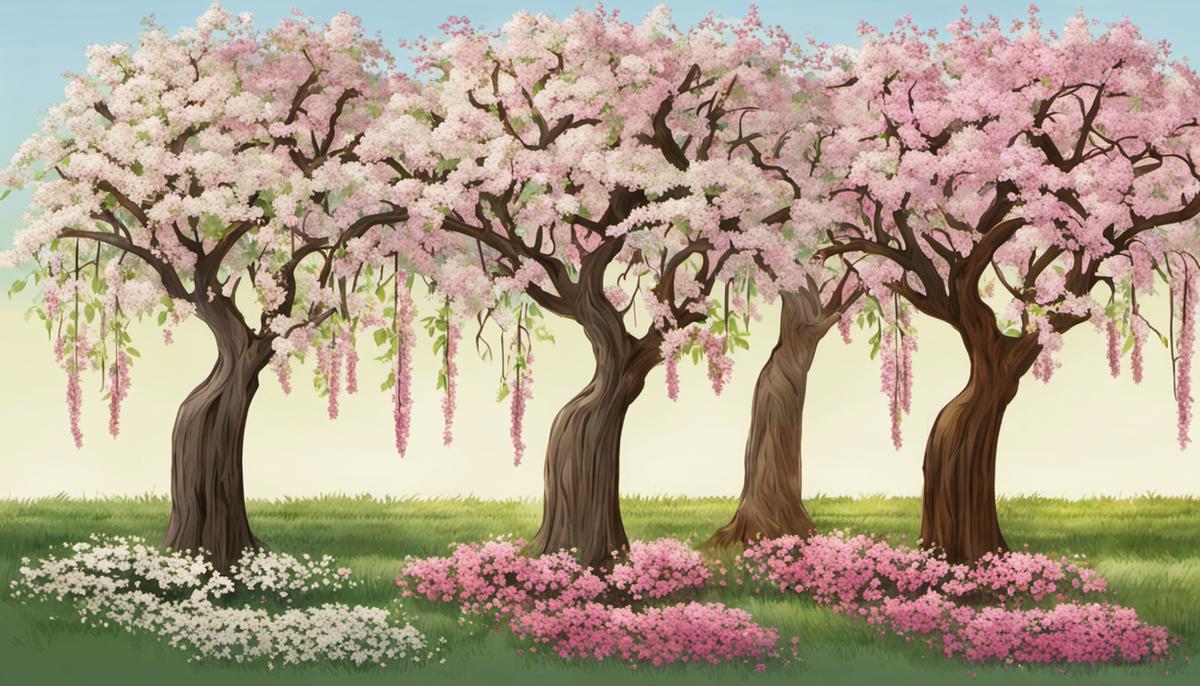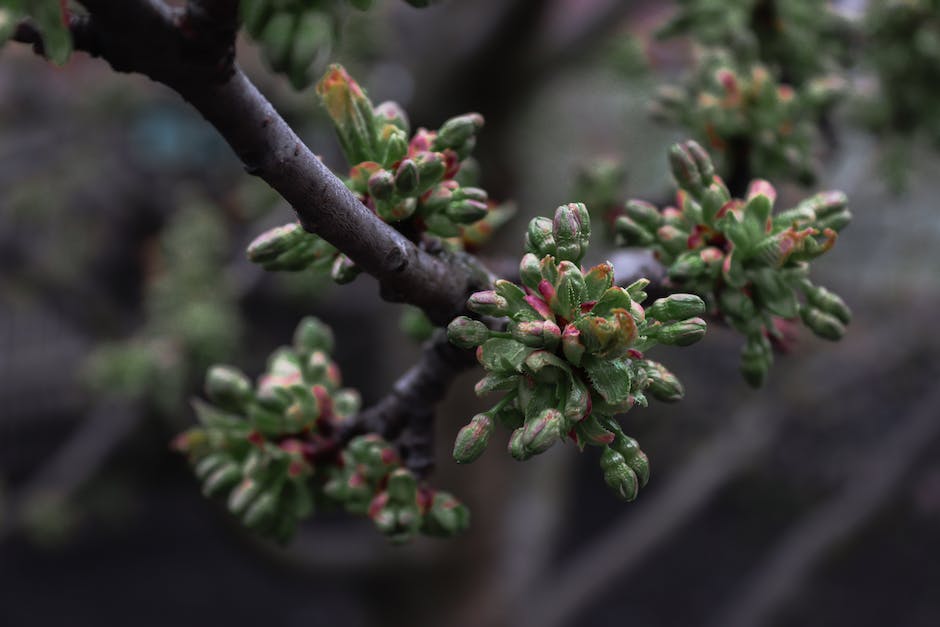Mastering Weeping Cherry Tree Trimming

Cultivating a garden stirs excitement and pride, with one of the most aesthetically pleasing spectacles being the weeping cherry tree. The tree, known for its cascading branches and delicate blooms, demands careful maintenance to ensure it flourishes. It is in understanding the tree’s unique growth cycle and mastering the appropriate trimming techniques that one can optimize its health and beauty. Alongside these aspects, it is paramount to be cognizant of safety measures when dealing with tree maintenance. Let us embark on this enlightening journey to learn how to best nurture and prune our weeping cherry tree.
Understanding Weeping Cherry Tree Growth Cycle
Perfect Timing: When to Trim Your Weeping Cherry Tree
Any diligent hobbyist knows that timing is everything when it comes to maintaining a garden, and the delicate beauty of the weeping cherry tree is no exception. Pruning these icons of elegance isn’t just about getting your snips and cutting away; you’ve got to time it right to yield the best results. Let’s dive right in and find out when the ideal time is to trim a weeping cherry tree!
Blooming with cascades of pink or white flowers, the weeping cherry trees are a sight to behold. Expertly trimmed specimens dramatically elevate a garden’s beauty, invoking a sense of peace and tranquillity. Yet, without proper, timely pruning, these trees can lose their distinct shape, inviting potential pests and leaving you with complications that could have been easily avoided. Hence, timing is crucial.
The best time to prune a weeping cherry tree is early spring, just before the new growth starts, or late summer to early fall, once the blooming season is over. By trimming in these intervals, the tree is allowed to heal quicker, thereby ensuring it is robust and ready to burst into beauty when the blooming season arrives.
Early Spring Pruning
Trimming in the early spring, just before bud break, has multiple benefits. Firstly, it’s a time when the tree is still relatively dormant, meaning its energy is reserved for healing any cuts or wounds caused by pruning. This also prevents “bleeding,” a process where sap flows out of cuts, thereby reducing the likelihood of disease or insect infestation.
Late Summer to Early Fall Pruning
If early spring pruning is not possible, wait until late summer or early fall when the tree has finished blooming. During this time, the tree’s energy is no longer being spent on blooming and can focus on healing the wounds from pruning before winter sets in. It’s essential, though, to complete this pruning well before the first frost occurs, as fresh cuts could freeze over, causing the tree irreversible damage.
Remember, improper pruning can cause more harm than good, so always be sure to use clean, sharp tools and make careful, precise cuts. Protective measures such as sealants may also be useful in preventing potential diseases.
Aside from annual maintenance, be sure to carry out additional pruning if signs of disease or damage become visible. Indeed, proper timing of this vital task is the key to maintaining the breathtaking spectacle that a well-groomed weeping cherry tree is!
Don’t shy away from occasionally showing your garden some love, and rewarding yourself with a splendid display of blossom each spring! By correctly timing your pruning, your weeping cherry tree is sure to reward your diligent care. Happy gardening!

Trimming Techniques for Weeping Cherry Trees
Mastering Weeping Cherry Tree Pruning: A Comprehensive Guide on Methods
Isn’t wondering in the lush green field full of weeping cherries an enthralling sight? Their long, drooping branches add to a garden’s allure. However, maintaining these magnificent natural sculptures entails mastering their pruning techniques. Penned below is a range of effective pruning methods that buoy the weeping cherry’s bewitching gravitas.
First, consider the cherry tree’s growth pattern. These trees have an umbrella-like shape, with branches gracefully arching towards the ground. Carefully dissecting the branches doesn’t meddle with natural aesthetics. Just a slow, contemplative study before brandishing the shears!
Technique-wise, adopt the “thinning”style over “heading back”. This method removes entire branches or limbs, maintaining the tree’s natural form. It stimulates growth albeit not as prolifically as ‘heading back’, reducing the need for frequent pruning. An apt method to commit to where pruning isn’t a daily possibility.
In the mix is “branch collar cutting”. Branch collars are swollen areas at the base of branches where it intersects with the trunk or a larger branch. Slice outside this area and voila! This promotes tree healing, reducing chances of disease incursion. It’s tempting to get in close, yet resist, as a snug cut can harm these cherry beauties.
Each tree, like every human, is unique. Occasionally, you’ll encounter “water sprouts” and “suckers”. These are vigorous vertical shoots that grow from the trunk or the base of the tree. Removing these hyper-growers permit nutrients and energy flow to essential parts, ensuring a visually balanced tree. Nothing fazes the enlightened pruner, does it?
At times, the weeping cherry might feel under the weather. Fear not, “remedial pruning” is there to the rescue. This technique involves removing diseased or infested parts, preventing further spread. It’s like an immunization shot, but for trees. Don’t hesitate; it’s for the best.
Finally, remember the “10-20% rule”. It suggests not to remove more than 10-20% of the tree’s wood in a year. Whilst not a strict cap, it suggests a limit for the vigor of cuts. It ensures the pruner enjoys the cherry’s beauty with diluting the tree’s energy reserves. Now there’s wisdom!
Pruning a weeping cherry tree isn’t a fearsome task, rather a chance to show some green-thumb love. These splendid trees appreciate patience, knowledge, and skills as they bloom unconcealed gratitude. So, grab the pruning shears and gingerly step towards the tree. Get ready to witness that raucous explosion of cherry blossoms this spring!

Tree Trimming Safety Measures
Moving further into the realm of trimming and maintaining weeping cherry trees brings us to the paramount aspect of the hobby – safety. While the earlier contents of the article emphasized the fine art of pruning and timing, it becomes vital to comprehend the safety measures involved. This, in the end, is what improvises the entire pruning experience, polishing one’s gardening endeavors to a level of bewildering expertise.
To begin with, personal protective equipment is the first line of defense. It might seem a tad bit overrated for some, yet this uninspiring chore guards against unexpected hazards. A sturdy set of garden gloves will keep those delicate hands safe from sharp foliage and unforeseen prickles. Perhaps leverage a long-sleeved shirt and long pants to ward off scrapes and insect bites. And no to forget, a sturdy pair of protective glasses is indispensable – checked for ANSI rating, they shield the eyes from unexpected branches, dust, and debris.
Weeping cherry trees, with their cascading branches, can sometimes hide dangerous things. Before pruning, conduct a rigorous visual inspection to spot potential hazards like nests of stinging insects, sharp broken branches, or areas of rot. These threats can often be mitigated before they cause problems, thus ensuring a safer pruning experience.
To conduct pruning in a safe manner, never overextend your reach. Although it might be tempting to reach out and cut that far off branch in a single swipe, misbalance can lead to accidents. Aim to keep a comfortable, sturdy position while pruning. If you cannot reach a branch comfortably, it might be time to use an extension pruner or consider hiring professional help.
In larger weeping cherry trees, ladder safety becomes a requisite. Choose a ladder that suits the size of the tree and ensures that it’s of solid build. Plant the ladder firmly on the ground preferably in the ‘shade’ side of the tree to prevent it from toppling over due to wind. Climbing a ladder with your pruning tools in hand is a big no-no. Use a tool belt or have someone hand you the tools once you’ve climbed up safely.
A word of caution for power tools like chainsaws and power pruners. They make the process faster and easier but also deliver higher risk. Always operate these tools according to the manufacturer’s instructions, wear the recommended safety equipment, and never operate them alone. Having someone around, avoiding the use of such tools on ladders or in wet conditions can diminish the chance of accidents substantially.
The pruning cut’s location plays a role in safety too. Always aim for cuts outside the branch collar – the swollen area where the branch meets the trunk. This minimizes the tree’s wound, reducing the drawing in of diseases and pests. Similarly, while thinning or conducting remedial pruning, avoid cutting into the tree’s growth ring to prevent any lasting damage.
Finally, remember that safety concerns also extend to the tree itself. Observing rules like the 10-20% guideline for wood removal, avoiding flush cuts, and addressing water sprouts and suckers safely all add up to safeguard the tree’s health in the long run.
There you have it! By following these steps, the act of safely trimming a weeping cherry tree seems less daunting. And remember to sip on that rewarding cup of tea after a mighty good job every time!

The allure of a well-tended weeping cherry tree in full bloom is more than just its visual appeal. It is a testament to the patience, understanding, and craft of the gardener who tends to it. With a solid grasp of the tree’s growth cycle and appropriate pruning techniques, you will be equipped to groom your cherry tree not only to bloom in the spring but also to thrive throughout the year. Remember always to prioritize safety, as all gardening tasks, even those as serene as shaping a weeping cherry tree, carry their potential risks. With knowledge and a thoughtful approach, the weeping cherry tree in your garden can continue to beautifully narrate the passage of seasons for years to come.



